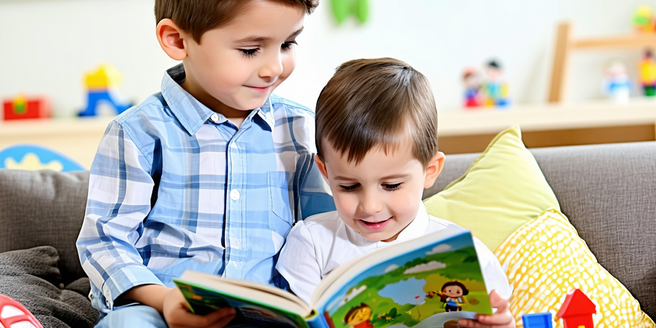
Understanding Sibling Dynamics
Sibling relationships are complex and evolve over time. From childhood rivalries to adult alliances, understanding these dynamics is crucial for fostering healthy connections. Parents should observe how siblings interact, recognizing patterns of competitiveness or rivalry. Promoting an environment of inclusivity where each child feels valued can mitigate negative interactions. By spending one-on-one time with each child, parents can strengthen individual bonds, reducing the need for sibling rivalry as a means to gain attention. Encouraging siblings to express their feelings openly further helps in developing empathy and mutual understanding, laying a strong foundation for their future relationship.
Encouraging Open Communication
Effective communication is the backbone of any strong relationship, including those between siblings. Encouraging open communication helps siblings articulate their feelings and understand each other better. Parents can cultivate this by modeling active listening and respectful dialogue. Incorporating family activities that require teamwork can also enhance their communication skills. Setting aside regular family meetings where every member has a voice can further instill the habit of open dialogue. Teaching children to express their emotions constructively not only strengthens sibling bonds but also equips them with essential life skills. This nurturing atmosphere ensures that issues are addressed early, preventing misunderstandings from escalating into bigger conflicts.
Fostering Teamwork and Cooperation
Learning to work together towards common goals is an invaluable skill for siblings. Encouraging teamwork through shared responsibilities, such as chores or family projects, fosters cooperation. Collaborative activities, like engaging in team sports or building a shared hobby, can enhance their ability to function as a unit. By working together, siblings naturally develop problem-solving skills that are essential in many areas of life. These experiences teach siblings how to divide tasks, negotiate roles, and appreciate each other’s strengths. Positive reinforcement when they accomplish goals together further cements the value of teamwork. Over time, siblings learn to rely on each other, strengthening their bond and building mutual respect.
Managing Conflicts Positively
Conflict is an inevitable part of sibling relationships, but it can be managed positively to strengthen bonds. Teaching children conflict resolution skills is crucial. Encouraging empathy alongside communication can further improve their interactions. Encourage them to communicate their feelings calmly and listen to each other’s perspectives. Setting up rules for fair fighting, such as no name-calling, can prevent conflicts from escalating. Parents should guide siblings in finding solutions that satisfy both parties, fostering a sense of compromise. By celebrating successful resolutions, families can transform disagreements into opportunities for growth and understanding, reinforcing the idea that conflicts can be constructive if approached positively.
Celebrating Individuality and Differences
Recognizing and valuing each sibling’s unique qualities is essential in promoting healthy relationships. Celebrating individuality creates an environment where children feel accepted and appreciated for who they are. Encourage siblings to support each other’s interests and talents, even if they differ. Parents should avoid comparisons and instead highlight each child’s strengths. This approach nurtures self-esteem and mutual respect, reducing the chance of rivalry. Open communication is key to resolving misunderstandings and building trust among siblings. By acknowledging and respecting differences, siblings learn to appreciate diverse perspectives, enriching their relationship and fostering a supportive family dynamic.
Creating Family Traditions Together
Family traditions offer siblings the opportunity to create lasting memories and strengthen their bonds. By establishing shared rituals, like family game nights or holiday traditions, families provide a sense of stability and belonging for children. Involving siblings in the planning and execution fosters a shared purpose and strengthens their connection. Introducing new elements to these traditions can keep them exciting and relevant as the family evolves. These traditions can serve as a source of comfort and continuity throughout their lives, deepening sibling relationships. As siblings grow older, these shared experiences become cherished family stories, reinforcing their bond and reminding them of the joy of togetherness.
